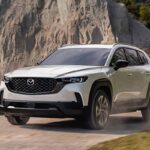
Kia’s flagship electric vehicles (EVs), such as the EV6 and EV9, have been approved for the federal EV tax credit under the Inflation Reduction Act (IRA) in the United States. The 2026 EV9 and 2025 EV6 models are eligible for up to $7,500 in tax credits. However, the high-performance GT trim produced in Korea will not qualify for this incentive.
The 2025 EV6 has received significant upgrades, boosting its range and overall appeal. It boasts a maximum range of 319 miles (approximately 513 km) and features improved exterior and interior designs. It also has a North American Charging Standard (NACS) port. This upgrade is compatible with Tesla Superchargers, greatly enhancing charging convenience for owners.
As Kia’s first three-row electric SUV, the EV9 also comes equipped with a standard NACS charging port, improving access to charging infrastructure for U.S. consumers. The high-performance EV9 GT variant delivers an impressive 501 horsepower, outperforming the GT-Line, and can accelerate from 0 to 60 mph (approximately 97 km/h) in a mere 4.3 seconds.
Kia has begun production of both vehicles at its West Point, Georgia facility, a crucial factor in meeting the criteria for the EV tax credit. However, the GT trim, which is assembled in Korea, does not qualify for this incentive.
Industry analysts note that if President Donald Trump’s 25% tariff on South Korean imports remains in effect until the EV9 GT’s launch, it could further widen the price gap between this trim and its American-made counterparts. Nevertheless, consumers may still be able to indirectly benefit from tax credits through leasing options, potentially improving accessibility to the GT models.
Kia has stated that the final pricing and detailed specifications for the EV6 and EV9 will be announced closer to their official launch dates.
























